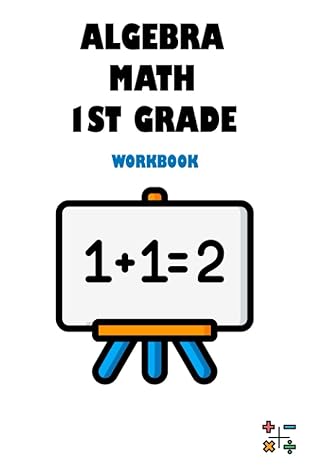Answered step by step
Verified Expert Solution
Question
1 Approved Answer
Lab #9: Binomial Distribution and Normal Approximation Part I: Dr. Clark claims to possess extrasensory perception (ESP). An experiment is conducted in which a person
Lab #9: Binomial Distribution and Normal Approximation Part I: Dr. Clark claims to possess extrasensory perception (ESP). An experiment is conducted in which a person in one room picks one of the integers 1, 2, 3, 4, or 5 at random and concentrates on it for one minute. In another room, Dr. Clark identifies the number she believes was picked. The experiment is done with three trials. After the third trial, the random numbers are compared with Dr. Clark's predictions. We can use binomial distributions to analyze the situation. We can compute the probability that the numbers would match by sheer random chance, without any extra help such as ESP. Question #1: If a person merely guesses, what is the probability of a correct answer? (That is, what is the probability of a success?) Response: There are 5 integers to choose from within three trials. The probability of a correct answer would be Question #2: Let X = number of correct guess in three trials. What is the sample space of X? Response: Question #3: Considering X has a binomial distribution, X ~ B(n, p). What are the values of n and p? Response: Question #4: What is the probability of each event in the sample space? Write your result in table form where you list the outcomes and the corresponding probabilities. Verify the probabilities sum to one. x 1 2 3 4 P(X = x) You can also use the Binomial Distribution calculator on StatCrunch to verify these values. Go to Stat/Calculator/Binomial, enter the correct values for n and p, and choose a value for example \"Prob(X = 2)\". Question #5: Interpret P(X=2) from the table above. What does this tell you about choosing numbers? Response: Question #6: Now let's return to Dr. Clark. She got the correct result twice. Does your work with the related binomial distribution support or refute her claim of ESP? Explain. Response: Part II: We will compare the normal and binomial distributions for various n. a) Simulate a binomial data set by doing the following: \"Data\" \"Simulate\" \"Binomial\". Use the following settings: \"n\" (insert 50), \"p\" (insert .08), \"columns\" (insert 1), and \"rows\" (insert 150). b) Compute and . c) Compute the expected mean,, and standard deviation ,. d) Create a histogram of your simulated binomial data. Use the option \"Overlay density\
Step by Step Solution
There are 3 Steps involved in it
Step: 1

Get Instant Access to Expert-Tailored Solutions
See step-by-step solutions with expert insights and AI powered tools for academic success
Step: 2

Step: 3

Ace Your Homework with AI
Get the answers you need in no time with our AI-driven, step-by-step assistance
Get Started


